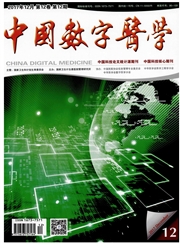

 中文摘要:
中文摘要:
抑郁障碍已成为当今社会影响人们精神健康最重要的问题之一。然而,有二分之一到三分之二的抑郁障碍患者在初次治疗的前半年里停药,其中部分患者停药原因是无法耐受药物不良反应。在临床决策过程中,准确把握和分析抗抑郁药物的不良反应成为临床医生面临的一个重要环节。抗抑郁药不良反应通常多达几十种,临床工作中,医生既要兼顾疗效与不良反应间的平衡,又要顾及患者躯体疾病治疗,难以快速、准确的做出最优决策。使用结构化和语义化的知识图谱能够帮助医生分析备选药物不良反应发生概率,避免加重原有躯体疾病,提高临床分析的效率和准确度。提出一种抗抑郁药知识在抑郁障碍知识图谱中的构造与整合方案,并分析其如何用于临床决策支持。
 英文摘要:
英文摘要:
Major depression is one of the most important public mental health problems worldwide. As therapeutic and supportive care interventions become increasingly effective, more than half of patients choose to stop training in the first half year. The side effects of antidepressant play significant roles, even through multiple key determinants impact the compliance of antidepressant treatment. There is a need to develop a system that automatically balance the curative and side effect of antidepressant, and detect the treatment of somatic disease for a clinical decision support system. In this paper, we introduce the work of structured Knowledge Graph of Depression (Depression KG) with the support of the semantic technology, so that it is more convenient for psychiatric doctors to improve the efficiency and accuracy of clinical analysis. We will report how to integrate the side effect knowledge of antidepressant with Depression KG and discuss several use cases for clinical decision support.
 同期刊论文项目
同期刊论文项目
 同项目期刊论文
同项目期刊论文
 期刊信息
期刊信息
